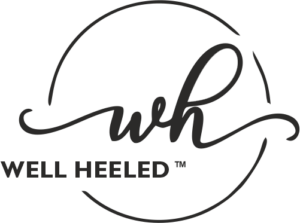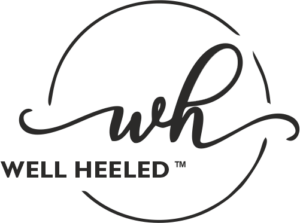Compression Socks vs Ted Hose: Understanding the Differences
Introduction
In the realm of leg health and circulatory issues, two prominent products often take center stage: compression socks and Ted hose. These specialized garments are designed to address various leg-related concerns, but they have different characteristics and applications. In this comprehensive article, we will explore the key differences between compression socks and Ted hose, shedding light on their unique features, benefits, and best-use scenarios. By the end of this discussion, you’ll be well-equipped to make an informed choice between these two essential legwear options.
Understanding Compression Socks
What Are Compression Socks?
Compression socks, also known as compression stockings or support stockings, are elastic garments primarily designed to improve blood circulation in the legs. They are typically made from a blend of materials, including spandex, nylon, or elastane, which provide the necessary pressure to the leg muscles and veins. This pressure gradually decreases from the ankle upward, promoting the flow of blood back to the heart.
How Do Compression Socks Work?
Compression socks work on the principle of graduated compression. The highest pressure is exerted at the ankle, where blood flow is often compromised due to gravity and prolonged periods of sitting or standing. As the sock extends up the leg, the pressure gradually decreases, helping the blood move more efficiently towards the heart. This mechanism aids in preventing the pooling of blood in the lower extremities, reducing the risk of issues like deep vein thrombosis (DVT), varicose veins, and edema.
Who Benefits from Compression Socks?
Compression socks are beneficial for a wide range of individuals, including:
- Individuals with Varicose Veins: Compression socks can alleviate the symptoms of varicose veins, such as pain, swelling, and discomfort, by promoting better blood circulation.
- Frequent Travelers: Long hours of sitting during air travel can increase the risk of DVT. Compression socks are often recommended for travelers to reduce this risk.
- Athletes: Athletes, especially runners, may wear compression socks to enhance performance by improving blood flow to the muscles and reducing muscle fatigue.
- Pregnant Women: Pregnancy can lead to swollen legs and feet due to increased pressure on blood vessels. Compression socks can help manage these symptoms.
- Individuals with Diabetes: People with diabetes are at a higher risk of developing circulatory issues. Compression socks can assist in maintaining healthier blood flow in the legs.
- Post-Surgery Patients: After certain surgical procedures, compression socks are used to prevent blood clots and reduce swelling.
- Professionals Who Stand All Day: Workers in professions that require prolonged periods of standing, such as nurses and retail employees, often wear compression socks to reduce leg fatigue.
Ted Hose: The Medical Perspective
What Are Ted Hose?
Ted hose, short for thromboembolism-deterrent hose, are specialized anti-embolism stockings primarily used in medical settings. Unlike regular compression socks, Ted hose are designed to provide uniform compression throughout the leg. They are typically made from a stronger, less elastic material to exert consistent pressure on the leg.
How Do Ted Hose Work?
The primary purpose of Ted hose is to prevent deep vein thrombosis (DVT), a condition where blood clots form in the deep veins, usually in the legs. DVT can be life-threatening if a clot breaks loose and travels to the lungs, causing a pulmonary embolism. Ted hose work by compressing the leg muscles and veins, reducing the risk of blood pooling and clot formation. They are often prescribed for patients who are bedridden or have limited mobility, as these individuals are at a higher risk of DVT.
When Are Ted Hose Recommended?
Ted hose are typically recommended for individuals in specific medical situations, including:
- Hospitalized Patients: Patients who are confined to a hospital bed for extended periods, such as those recovering from surgery or with certain medical conditions, may be prescribed Ted hose to prevent DVT.
- Post-Surgical Care: Ted hose are commonly used after surgical procedures, especially orthopedic surgeries, to reduce the risk of blood clots.
- Pregnancy and Childbirth: Pregnant women who are at an increased risk of DVT due to hormonal changes and reduced mobility during pregnancy may be advised to wear Ted hose.
- Long-Term Bed Rest: Individuals who are bedridden for an extended duration, such as those with severe injuries or illnesses, may be prescribed Ted hose to prevent DVT and maintain leg circulation.
Key Differences Between Compression Socks and Ted Hose
Now that we have a clear understanding of what compression socks and Ted hose are, let’s delve deeper into the key differences between these two legwear options:
1. Purpose and Target Audience
- Compression Socks: Compression socks have a broad range of applications, catering to both medical and non-medical needs. They are suitable for individuals with varicose veins, athletes, travelers, and those who stand for extended periods.
- Ted Hose: Ted hose, on the other hand, have a specific medical purpose – to prevent deep vein thrombosis in individuals at high risk. They are primarily prescribed in hospital settings or for post-surgical care.
2. Compression Level and Gradient
- Compression Socks: These socks are designed with a graduated compression profile, exerting the highest pressure at the ankle and gradually decreasing pressure as they move up the leg. This gradient compression promotes healthy blood flow.
- Ted Hose: Ted hose provide consistent compression throughout the leg, which is necessary for preventing blood clots. They do not have the graduated compression pattern seen in compression socks.
3. Materials and Elasticity
- Compression Socks: Compression socks are made from a blend of materials like spandex, nylon, and elastane, which give them a higher degree of elasticity. This elasticity makes them comfortable for daily wear.
- Ted Hose: Ted hose are typically made from a less elastic and more rigid material to maintain constant pressure on the leg. They may feel tighter and less comfortable than compression socks for prolonged use.
4. Prescription vs. Over-the-Counter
- Compression Socks: Most compression socks are available over-the-counter, and individuals can choose their preferred compression level and style without a prescription. They are readily accessible for non-medical use.
- Ted Hose: Ted hose are typically prescribed by healthcare professionals, and the compression level and type are determined based on the patient’s medical needs. They are not readily available for purchase without a prescription.
5. Cost
- Compression Socks: Compression socks come in a wide price range, depending on the brand, material, and compression level. They are generally more affordable than Ted hose.
- Ted Hose: Ted hose tend to be more expensive due to their medical-grade construction and purpose. Insurance may cover the cost for patients with specific medical conditions.
Making the Right Choice
The decision between compression socks and Ted hose ultimately depends on your specific needs and circumstances. Here are some factors to consider when making your choice:
1. Medical Condition
If you have a medical condition that puts you at risk of deep vein thrombosis or requires constant leg compression, Ted hose prescribed by a healthcare professional may be the best choice.
2. Comfort and Lifestyle
If you are looking for leg support during travel, sports, or long periods of standing, compression socks offer a comfortable and versatile solution.
3. Preference and Prescription
Consider whether you have a prescription for a specific type of legwear. If not, compression socks provide a wide range of options that you can choose based on your comfort and preference.
4. Budget
If cost is a significant factor, compression socks are generally more budget-friendly compared to Ted hose.
Conclusion
In the realm of leg health, compression socks and Ted hose play vital roles in addressing circulatory issues. Understanding the differences between these two options is crucial for making an informed choice that aligns with your specific needs and circumstances. Whether you opt for compression socks for daily comfort or Ted hose for medical purposes, both products are essential tools in promoting healthy leg circulation and preventing potential complications. Remember to consult a healthcare professional for personalized advice and recommendations based on your individual health situation.


